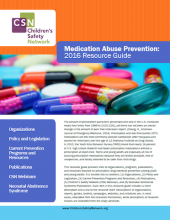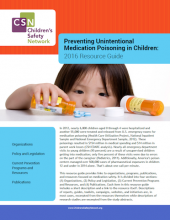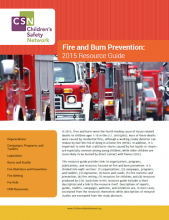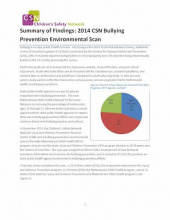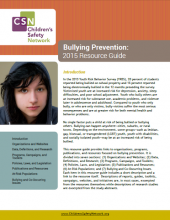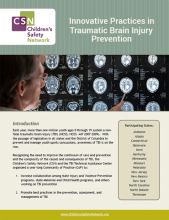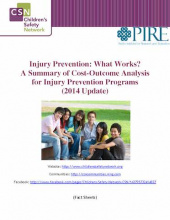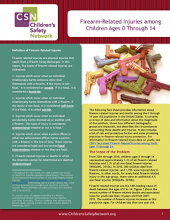CSN Publications
![]() This page displays all Children’s Safety Network (CSN) publications sorted by date released. Please feel free to download and share through Facebook, X, Pinterest, or email.
This page displays all Children’s Safety Network (CSN) publications sorted by date released. Please feel free to download and share through Facebook, X, Pinterest, or email.
Released Date:
Every year in the US, 3,572 people die from drowning. Nine hundred and forty-five of them are children. Children account for one out of four drowning deaths. This infographic from the Children's Safety Network covers the demographics of drownings, locations of drownings, near drowning, and…
Read MoreReleased Date:
This CSN infographic focuses on the disparities in child passenger deaths and offers prevention strategies. Download a print version of the infographic Disparities in Child Passenger Safety Motor vehicle crashes are a leading cause of death among children[*] From 2010 through 2014, an average of…
Read MoreReleased Date:
The amount of prescription painkillers prescribed and sold in the U.S. increased nearly four times from 1999 to 2010 (CDC), yet there has not been an overall change in the amount of pain that Americans report. (Chang, H., American Journal of Emergency Medicine, 2014). Prescription and over-the-…
Read MoreReleased Date:
In 2012, nearly 6,000 children aged 0 through 4 were hospitalized and another 55,000 were treated and released from U.S. emergency rooms for medication poisoning (Health Care Utilization Project, National Inpatient Sample and National Emergency Department Sample, 2012). These poisonings resulted in…
Read MoreReleased Date:
Falls are the number one leading cause of hospitalized injury in the U.S. for children ages 0 through 14. This infographic has information on the frequency and causes of fall hospitalizations among children and youth. Download a print version of the infographic Falls are the…
Read MoreReleased Date:
In 2013, US high school students took the CDC’s Youth Risk Behavior Survey. This infographic outlines some of the findings related to bullying and fighting. Download a printable PDF of the infographic How Common Are Bullying and Fighting among High Schoolers? In 2013, US high school students…
Read MoreReleased Date:
This resource was recently updated. Visit the latest version. In 2013, fires and burns were the fourth leading cause of injury-related deaths to children ages 1-18 in the U.S. (WISQARS). Most of these deaths were caused by residential fires, although a working smoke detector can…
Read MoreReleased Date:
Traumatic Brain Injury (TBI), defined here as a concussion, skull fracture, or internal brain injury, can have life-long cognitive, physical, and financial impacts. Preventing these injuries requires an understanding of what causes them. To understand the causes of TBI, the…
Read MoreReleased Date:
Child Safety CoIIN: A Roadmap to Continuous Quality Improvement The following information uses the analogy of a road trip to describe the steps for participants in the Child Safety CoIIN. We hope it will help you understand how all the different components fit together and how your state,…
Read MoreReleased Date:
Participants in the Child Safety Collaborative Innovation and Improvement Network (CS CoIIN) are identifying and developing innovative ways to collect real-time outcomes data. Typically, data on injury-related deaths, hospitalizations, and emergency department (ED) visits are centrally collected at…
Read MoreReleased Date:
E-cigarettes contain a liquid nicotine solution that can be poisonous. These products come in bright colors and appealing flavors and scents, making them particularly attractive to young children. Print version of infographic with sources Poster version of infographic Lethality[1] Nicotine is an…
Read MoreReleased Date:
Bullying is a major public health concern. According to the 2013 Youth Risk Behavior Survey, a biennial survey of students in grades 9-12 that is conducted by the Centers for Disease Control and Prevention (CDC), 20% of students reported being bullied on school property and 15% reported being…
Read MoreReleased Date:
This resource was recently updated. Visit the latest version. In the 2013 Youth Risk Behavior Survey (YRBS), 20 percent of students reported being bullied on school property and 15 percent reported being electronically bullied in the 12 months preceding the survey. Victimized youth are at…
Read MoreReleased Date:
Each year, more than one million youth ages 0 through 19 sustain a non-fatal traumatic brain injury (TBI) (NEISS; NEISS –AIP 2007-2009). With the passage of legislation in all states and the District of Columbia to prevent and manage youth sports concussions, awareness of TBI is on the rise.…
Read MoreReleased Date:
This resource was recently updated. Visit the latest version. Summarizes the incidence and cost savings of interventions to prevent injuries due to motor vehicles, impaired driving, open-flame/burns, and violence. Also includes cost savings realized by health/miscellaneous services and…
Read MoreReleased Date:
According to the 2013 Youth Risk Behavior Survey (YRBS), nearly 15 percent of high school students have experienced electronic bullying within the past year. Sexting has become a concern as adolescents text, e-mail, or post explicit pictures of themselves or others on social networking sites.…
Read MoreReleased Date:
The deadliest day of the year for child pedestrians is Halloween. On average, over two times as many child pedestrians die on Halloween compared to other days. Our Halloween Safety infographic has safety facts and tips to make sure you and your children have a safe and happy Halloween! Print…
Read MoreReleased Date:
In 2013, 560 individuals lost their lives while boating, and 2,620 sustained non-fatal injuries. Forty-nine of those who died and 589 of those who were injured were youth between the ages of 0 and 19 years old. Since 1971, boating deaths have steadily decreased thanks to programs focusing on boater…
Read MoreReleased Date:
CSN has produced this resource guide to provide a comprehensive, annotated list of resources for pedestrian safety. The resource guide is divided into eight sections: Data; Safe Routes to School; Pedestrian Safety for Preschoolers; Other Programs, Strategies and Campaigns; Program Planning,…
Read MoreReleased Date:
The following fact sheet provides information about firearm-related injuries and deaths among the 0 through 14 year old population in the United States. It contains a review of data and information about the magnitude of the problem, shows how different demographic groups…
Read More